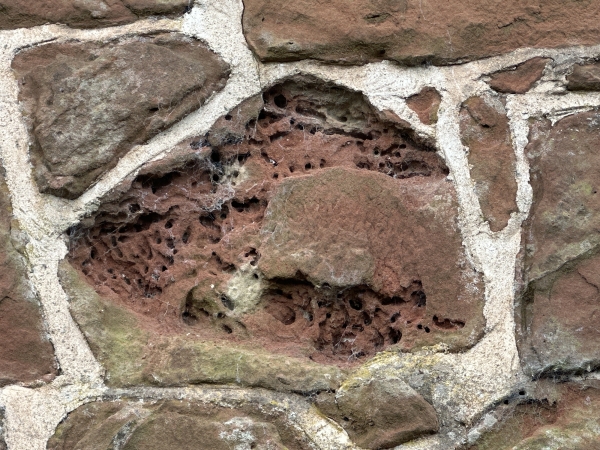
‘Bee’ aware: the buzz around masonry bees
17/06/24
Our Senior Building Surveyor Dave Bates is busy all week undertaking RICS home surveys for people looking to buy and sell houses. Recently, while undertaking a Level 3 survey on an older property, he noticed a rather unusual problem in the mortar between the bricks on a south facing wall. The mortar and stone work was deeply pitted with a pattern of holes. Dave recognised this as the work of the masonry or mortar bee.
These bees lead solitary lives rather than living as part of a colony. They are still important pollinators though. They tend to reside in a hole in the ground on their own, but sometimes do select mortar joints or soft bricks instead. They excavate and enlarge holes using their mandibles. Being so small, they can even find space to nest in an old nail hole.
In Britain, there are nearly 20 species of this kind of bee, the most common being the Red Mason. They look very like a honey bee but are very unlikely to sting you unless severely provoked! Red Mason bees lay six to 12 eggs around this time of year, each one in a separate cell, carefully sealed with mud. The larvae pupate in the autumn then hibernate during the winter. The new generation of adults will emerge the next year.
Masonry bees’ burrowing can establish a real labyrinth of tunnels within a wall. Birds can exacerbate the problem by attacking the walls to reach the bee larvae. If the holes fill with water, freeze thaw can do some damage in the winter months.
Although they are unlikely to cause you any real structural damage, to protect your walls against ‘attack’ by masonry bees, make sure you repair or replace any damaged mortar on your walls or chimneys and replace rotting wood too. To encourage bees to nest at a distance from your home, you could consider providing a ‘bee hotel’ at a distance from the property.





